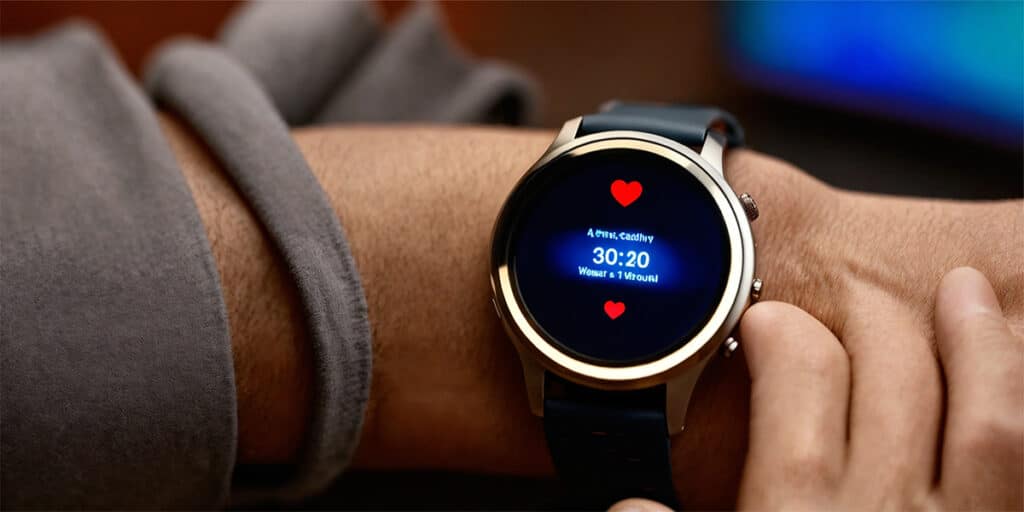- 1. The Rise of Smart Clothing in Health Tech
- 2. Transformative Benefits of Smart Clothing for Diabetes
- 3. Innovations Driving Smart Clothing for Diabetes
- 4. Challenges and Considerations in Smart Clothing for Diabetes Management
- 5. The Future of Smart Clothing in Diabetes Management: Your FAQs Answered
The landscape of diabetes management is on the cusp of a revolutionary change with the advent of smart clothing. This emerging technology seamlessly integrates health monitoring into the fabric of everyday life, offering a new level of convenience and precision in managing diabetes.
Unlike traditional devices that may be cumbersome or intrusive, smart clothing promises a future where managing diabetes becomes as simple as getting dressed in the morning.
The Rise of Smart Clothing in Health Tech
Smart clothing, or e-textiles, are garments embedded with sensors and electronics to monitor health metrics. The evolution from wearable devices like fitness trackers to clothing that can measure vital signs represents a significant leap forward. These garments can track a range of health data, including heart rate, body temperature, and, critically for diabetes management, glucose levels.
Transformative Benefits of Smart Clothing for Diabetes
Continuous Glucose Monitoring: Unlike traditional glucose meters, smart clothing offers the possibility of non-invasive, continuous monitoring of blood sugar levels, providing real-time data without the need for finger-pricking.
Integrated Health Management: Smart garments can monitor various health metrics simultaneously, offering a holistic view of the wearer’s health status and how it relates to their diabetes.
Personalized Diabetes Care: Data collected by smart clothing can be used to tailor diabetes management plans to the individual, optimizing treatment strategies based on personal health data.
Enhanced Comfort and Compliance: The non-intrusive nature of smart clothing increases the likelihood of compliance, making it easier for individuals to manage their diabetes consistently.
Innovations Driving Smart Clothing for Diabetes
The journey of smart clothing from an intriguing concept to a tangible reality in diabetes management is paved with groundbreaking advancements in several fields. At the heart of this evolution lies the synergy between sensor technology, textile engineering, and data analytics, which has transformed everyday garments into powerful tools for health monitoring and disease management. Here, we delve into the innovations that have been instrumental in bringing smart clothing to the forefront of diabetes care.
Advanced Sensor Technology
The development of flexible, skin-friendly sensors marks a significant leap forward in wearable technology. These sensors are designed to detect and measure various physiological signals, such as glucose levels, without invasive procedures. For individuals with diabetes, this means continuous, real-time monitoring of their condition without the need for frequent finger-pricking. The sensors are made from conductive materials that can bend and stretch with the fabric, ensuring they remain functional and comfortable when embedded in clothing.
Textile Engineering Breakthroughs
Textile engineering has played a crucial role in integrating sensors seamlessly into clothing. The latest innovations in this field involve creating fabrics that not only conduct electrical signals but also withstand the rigors of daily wear and washing. Researchers have developed techniques to weave or print conductive threads directly onto fabric, creating patterns that form the sensor network within the garment. This integration ensures that the smart clothing remains as wearable and aesthetically pleasing as traditional garments, making the technology more acceptable and accessible to users.
Data Analytics and Personalization
The vast amounts of data collected by smart clothing sensors are analyzed using sophisticated data analytics algorithms. These algorithms can identify patterns and trends in an individual’s glucose levels, providing insights that can inform personalized diabetes management plans. Moreover, advancements in machine learning and artificial intelligence (AI) allow these systems to predict potential glucose level fluctuations, enabling preemptive adjustments to diet, activity, or medication. This level of personalization and predictive analytics represents a significant advancement in managing chronic conditions like diabetes, offering a proactive rather than reactive approach to healthcare.
Connectivity and Integration
Smart clothing for diabetes management is designed to be part of a connected ecosystem, integrating seamlessly with smartphones, apps, and cloud-based platforms. This connectivity ensures that data collected by the clothing can be easily accessed by the wearer and shared with healthcare providers in real-time. It also opens up possibilities for remote monitoring and telehealth, where doctors can track a patient’s condition and provide advice or adjustments to treatment plans without the need for in-person visits.
Future Directions
As the technology behind smart clothing continues to evolve, we can expect to see even more innovative features tailored to diabetes management. Potential developments include more precise and diverse sensors capable of monitoring a wider range of health markers, improved battery life and energy harvesting techniques to power the sensors, and even the integration of drug delivery systems that can administer insulin or other medications based on the data collected by the clothing.
| Technology | Application | Impact on Diabetes Management |
|---|---|---|
| Conductive Fibers | Glucose Monitoring | Enables non-invasive, continuous glucose level tracking. |
| Embedded Microelectronics | Insulin Delivery | Facilitates automated insulin delivery based on real-time data. |
| Temperature Sensors | Skin Health Monitoring | Prevents complications by detecting early signs of skin irritation or infection. |
| Stretchable Electronics | Activity and Sleep Tracking | Monitors physical activity and sleep patterns, influencing glucose management. |
| Data Analytics Software | Health Insights | Provides personalized recommendations for lifestyle adjustments and medication. |
Challenges and Considerations in Smart Clothing for Diabetes Management
The integration of smart clothing into diabetes management heralds a new era of personalized healthcare, offering unprecedented opportunities for continuous monitoring and proactive disease management. However, this innovative technology also presents several challenges and considerations that must be addressed to realize its full potential.
Ensuring Accuracy and Reliability
One of the primary concerns with smart clothing is the accuracy and reliability of the health data it collects. For individuals with diabetes, inaccurate glucose readings can lead to inappropriate interventions, potentially resulting in harmful consequences. Ensuring that the sensors embedded in smart garments provide data that is as accurate as traditional monitoring devices is paramount. This challenge necessitates rigorous testing and validation of sensor technology under various conditions, including different levels of physical activity, temperature changes, and wear and tear from daily use. Furthermore, calibration mechanisms may need to be developed to maintain sensor accuracy over time.
Addressing Privacy Concerns
The collection and transmission of sensitive health data raise significant privacy concerns. Smart clothing devices are capable of gathering detailed information about an individual’s health status, which could be vulnerable to unauthorized access or breaches. Ensuring the privacy and security of this data is crucial. This involves implementing robust encryption methods for data transmission and secure storage solutions that comply with health data protection regulations such as the Health Insurance Portability and Accountability Act (HIPAA) in the United States or the General Data Protection Regulation (GDPR) in the European Union. Users must also be informed about how their data will be used and who will have access to it, allowing them to make informed decisions about their participation.
Accessibility and Affordability
The benefits of smart clothing for diabetes management should be accessible to all who need them, regardless of their economic status. However, the high cost of developing and producing these advanced garments may translate into retail prices that are prohibitive for many individuals. Addressing this challenge requires efforts from manufacturers to reduce production costs without compromising quality. Additionally, insurance companies and healthcare systems play a crucial role in making these technologies more affordable through coverage and reimbursement policies. Innovations in manufacturing, economies of scale, and partnerships with healthcare stakeholders can help lower costs and increase accessibility.
User Adoption and Adaptation
For smart clothing to be effective in diabetes management, it must be adopted and used correctly by the target population. This involves not only ensuring the garments are comfortable and aesthetically pleasing but also that they are easy to use. Education and training on how to wear, maintain, and interpret data from smart clothing are essential for user adoption. Moreover, the technology must be adaptable to fit into the diverse lifestyles and preferences of individuals with diabetes, requiring flexibility in design and functionality.
Ethical Considerations
The use of smart clothing in healthcare also raises ethical questions, particularly regarding consent and autonomy. Users must have full control over their health data, including the ability to decide how it is used and shared. Ethical considerations also extend to the potential for data-driven discrimination, particularly in employment or insurance, based on health information collected by smart garments.
The Future of Smart Clothing in Diabetes Management: Your FAQs Answered
What is smart clothing?
Smart clothing refers to garments integrated with technology to monitor health metrics, including glucose levels for diabetes management.
How does smart clothing monitor glucose levels?
Using conductive fibers and sensors, smart clothing can track glucose levels non-invasively, providing continuous data.
Can smart clothing replace traditional glucose meters?
While promising, smart clothing is intended to complement, not replace, traditional monitoring methods, offering additional insights and convenience.
What benefits does smart clothing offer for diabetes management?
It provides continuous, real-time monitoring, personalized health insights, and the potential for automated insulin delivery, enhancing diabetes care.
Are there privacy concerns with using smart clothing?
Yes, as with any connected device collecting personal data, ensuring privacy and data security is paramount.
How do I choose the right smart clothing for diabetes management?
Consider the accuracy of the technology, comfort, ease of use, compatibility with other devices, and cost.
Can smart clothing be washed like regular garments?
Yes, many smart garments are designed to be washable, but it’s important to follow the manufacturer’s care instructions.
Is smart clothing available now for diabetes management?
While still emerging, some smart clothing products are entering the market, with more expected as technology advances.
How much does smart clothing for diabetes management cost?
Costs vary widely depending on the technology and features. Some may be covered by insurance or healthcare providers.
What is the future of smart clothing in healthcare?
The potential is vast, with ongoing research and development focused on enhancing accuracy, functionality, and wearability for various health applications, including diabetes management.
Citations
- Heikenfeld, J., Jajack, A., Feldman, B., Granger, S. W., Gaitonde, S., Begtrup, G., & Katchman, B. A. (2019). “Accessing Analytes in Biofluids for Peripheral Biochemical Monitoring.” Nature Biotechnology, 37(4), 407-419.
- Sempionatto, J. R., Martin, A., Garcia-Carmona, L., & Wang, J. (2020). “Wearable Electrochemical Sensors for the Monitoring and Screening of Drugs.” ACS Sensors, 5(8), 2679-2700.
- Kim, J., Campbell, A. S., de Ávila, B. E.-F., & Wang, J. (2019). “Wearable Biosensors for Healthcare Monitoring.” Nature Biotechnology, 37(4), 389-406.
- Bandodkar, A. J., Gutruf, P., Choi, J., Lee, K., Sekine, Y., Reeder, J. T., Jeang, W. J., Aranyosi, A. J., Lee, S. P., Model, J. B., Ghaffari, R., Su, C. J., Leshock, J. P., Ray, T., Verrillo, A., Thomas, K., Krishnamurthi, V., Han, S., Kim, J., Krishnan, S., Hang, T., Rogers, J. A. (2020). “Battery-Free, Skin-Interfaced Microfluidic/Electronic Systems for Simultaneous Electrochemical, Colorimetric, and Volumetric Analysis of Sweat.” Science Advances, 6(1), eaaz000.
- Guk, K., Han, G., Lim, J., Jeong, K., Kang, T., Lim, E.-K., & Jung, J. (2019). “Evolution of Wearable Devices with Real-Time Disease Monitoring for Personalized Healthcare.” Nanomaterials, 9(6), 813.








